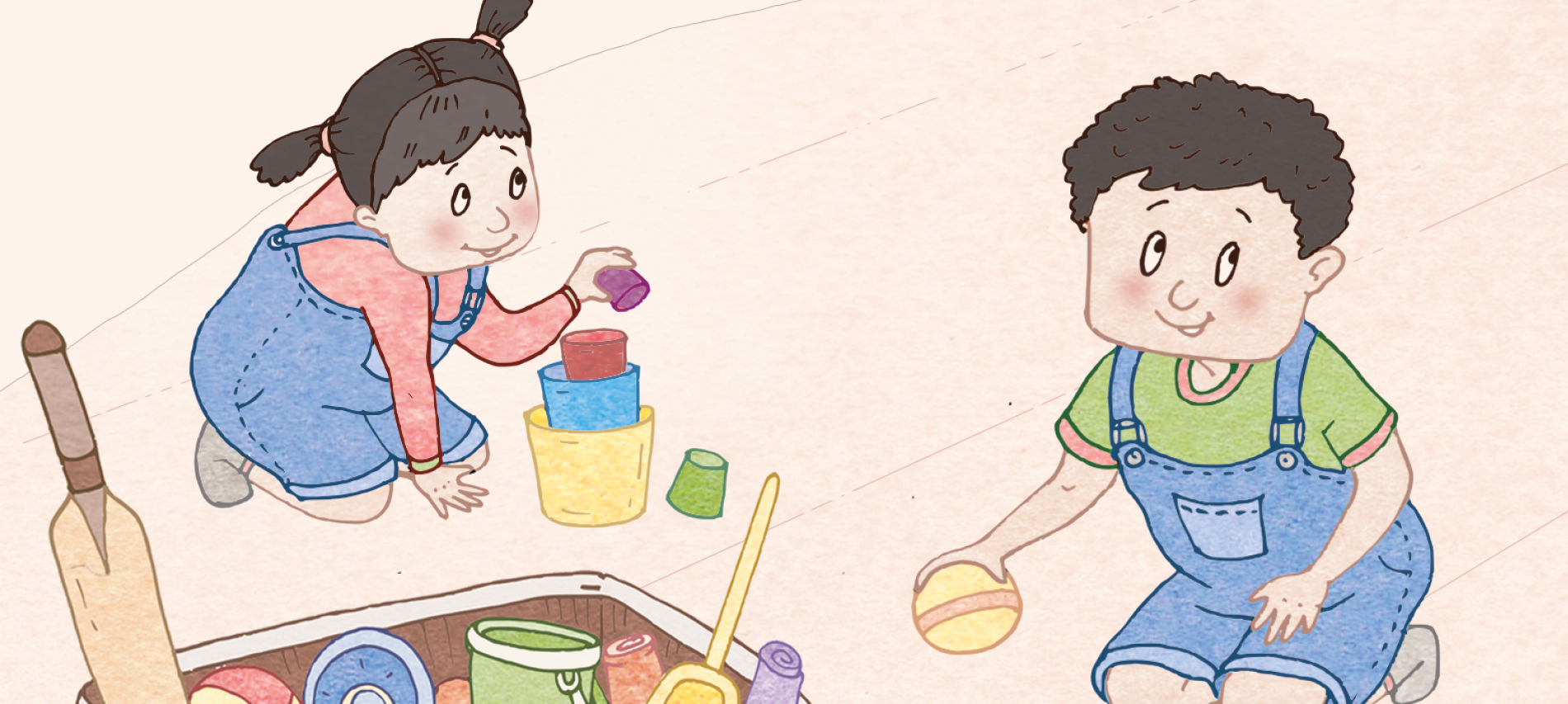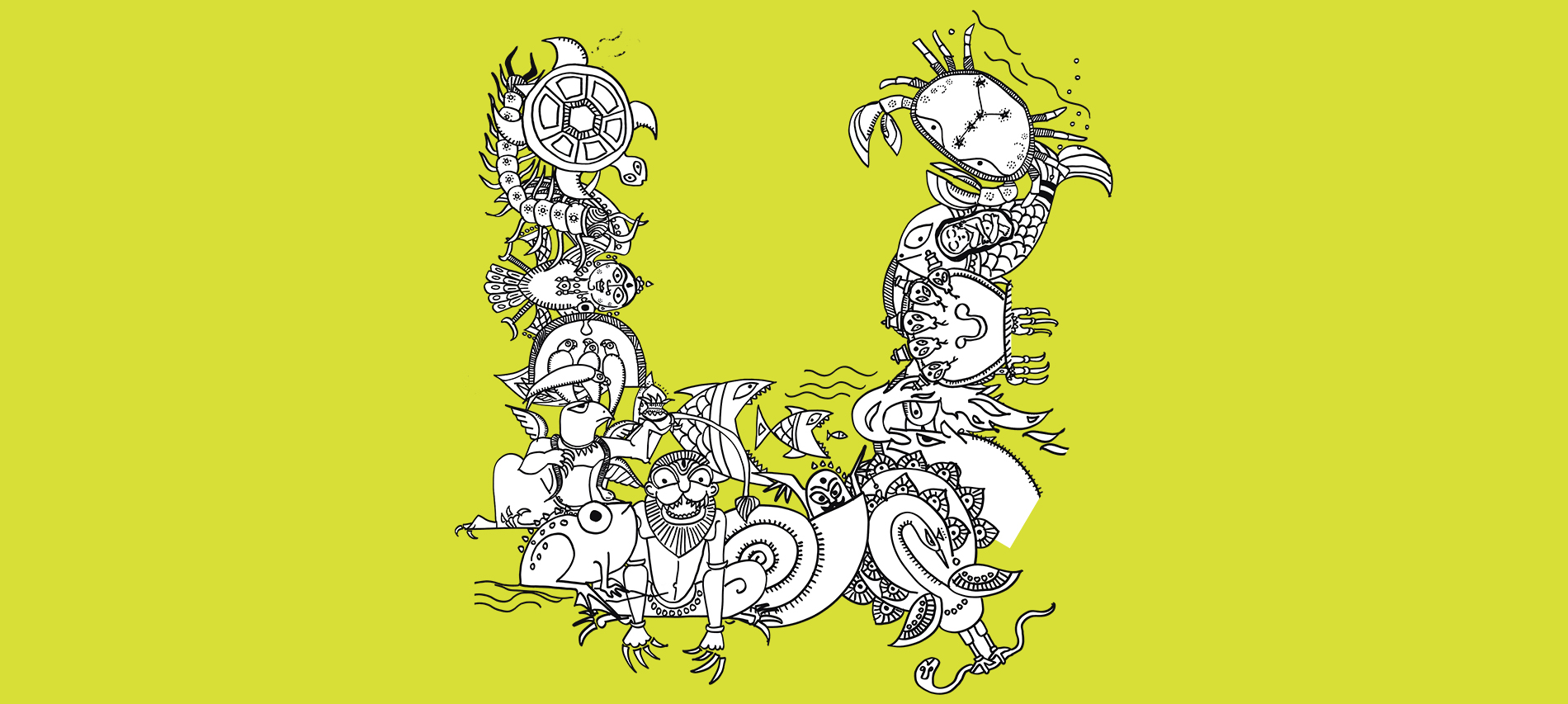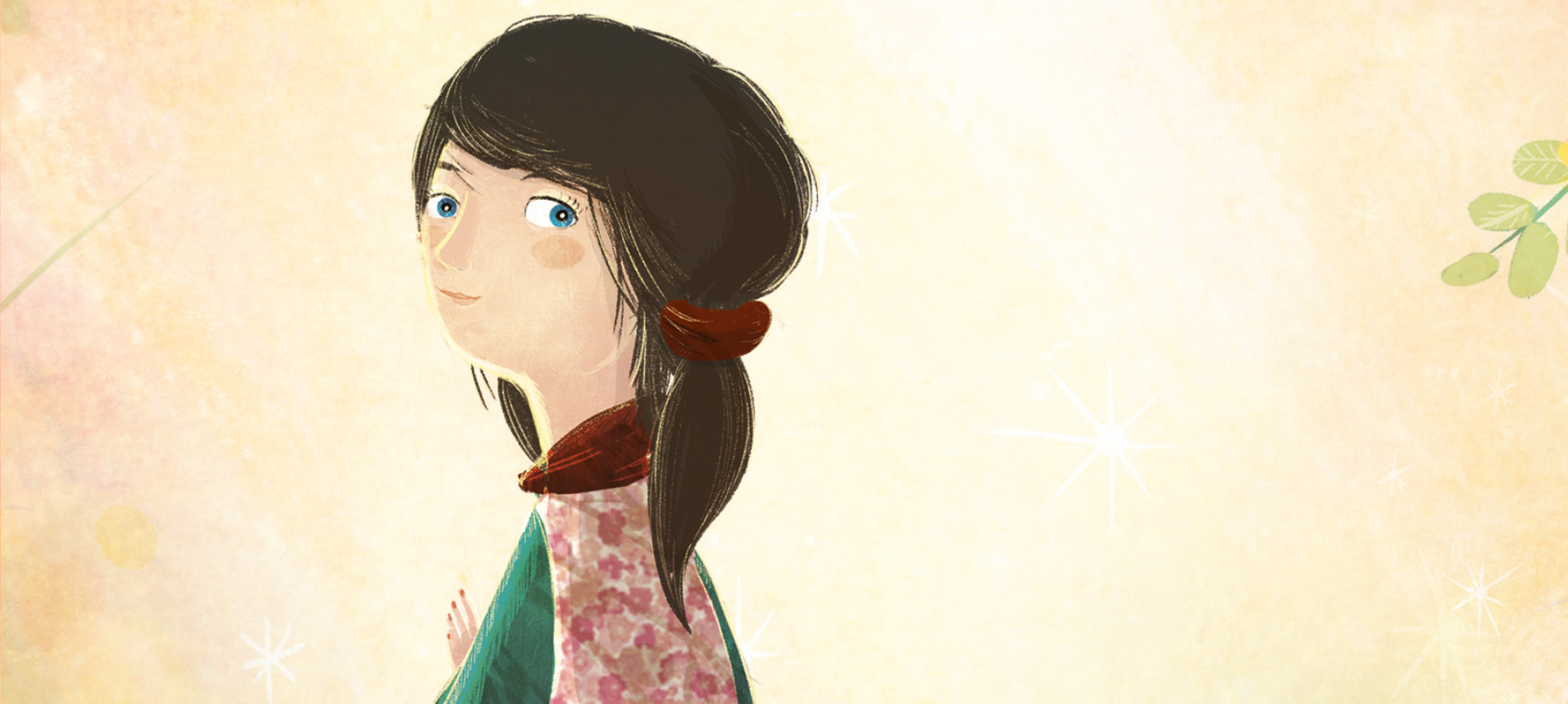Diverse discourses born from diverse cultures, histories and geographies of India come together in senior journalist, Nidhi Razdan’s book ‘Left, Right and Centre: The Idea of India’.
Author and Indian academic, Pratap Bhanu Mehta, discusses the inherent dichotomy in the celebration of this ‘diversity’ in India in his essay ‘India: From Identity to Freedom’.
Here’s an excerpt from Mehta’s essay.
India is a diverse country, a bewildering mosaic of communities of all kinds; its peculiar genius is to fashion a form of coexistence where this diversity can flourish and find its place. It has created cultures of political negotiation that have shown a remarkable ability to incorporate diversity.
This description of India is often exhilarating; and it is our dominant mode of self-presentation. But it’s very attractiveness hides its deep problems. The problem lies with the normative valorization of diversity itself. Diversity is something to be celebrated and cherished for often it is an indication of other values like freedom and creativity. But diversity has become a source of several intellectual confusions. Very schematically these are: Diversity is not itself a freestanding moral value. It makes very little sense to discuss diversity as carrying independent moral weight, even though under some circumstances, loss of diversity can be an indication of other underlying injustices. The invocation of diversity immediately invites the question: Diversity of what? This question cannot be answered without invoking some normative criteria about the permissible range of social practices. The limits to diversity cannot themselves be settled by an invocation of diversity.
The appeal to diversity is usually an aestheticized appeal. It is as if one were surveying the world from nowhere and contemplating this extraordinary mosaic of human cultural forms and practices. Such a contemplation of the world can give enormous enrichment and satisfaction and we feel that something would be lost; perhaps something of humanity would be diminished if this diversity were lost. But the trouble is that this view from nowhere, or if you prefer an alternative formulation, the ‘God’s Eye’ view of the world is a standpoint of theoretical, not practical, reason.
Most of us can conceptually grasp the fact of diversity; we may even try to recognize each other in an intense and important way, but it is very difficult to live that diversity with any degree of seriousness. From this theoretical point of view, cultures and practices form this extraordinary mosaic; from the practical point of view of those living within any of these cultures, these cultures and practices are horizons within which they operate. Even when not oppressive, these horizons might appear to them as constraints. It would be morally obtuse to say to these individuals that they should go on living their cultures, just because they’re not doing so might diminish the forms of diversity in the world. The imperatives of diversity cannot, at least prima facie, trump the free choices of individuals.
There is often a real tension between the demands of integration into wider society—the imperatives of forming thicker relationships with those outside the ambit of your own society on the one hand, and the measures necessary to preserve a vibrant cultural diversity on the other. What the exact trade-off is depends from case to case. But simply invoking diversity by itself will not help morally illuminate the nature of the decision to be made when faced with such a trade-off.
From this perspective, talk of identity and diversity is profoundly misleading because it places value on the diversity of cultures, not the freedoms of individuals within them. If the range of freedom expands, all kinds of diversity will flourish anyway. But this will not necessarily be the diversity of well defined cultures. It will be something that both draws upon culture and subverts it at the same time.
Diversity Talk is compatible with only one specific conception of toleration: segmented and hierarchical toleration. To be fair, India has been remarkably successful at providing a home for all kinds of groups and cultures. But each group could find a place because each group had its fixed place. To put it very schematically, it was a form of toleration compatible with walls between communities. Indeed, one of the major challenges for Indian society is that we have internalized forms of toleration that are suited to segmented societies. It is compatible with the idea that boundaries should not be crossed, populations should not mix, and that to view the world as a competition between groups is fine.
There is no country in the world that talks so much of diversity. Yet no other country produces such a suffocating discourse of identity; where who you are seems to matter at every turn: what job you can get, what government scheme you are eligible for, how much institutional autonomy you can get, what house you can rent. Conceptually, there is no incompatibility between celebrating diversity of the nation and refusing to rent housing to a Muslim just because they are Muslim. Such a conception of toleration does not work where the need is for boundaries to be crossed: people will inhabit the same spaces, compete for the same jobs, intermarry and so forth. Our moral discourse is so centred on diversity and pluralism that it forgets the more basic ideas of freedom and dignity.
Explore diverse opinions from some of the best minds in India with ‘Left, Right and Centre: The Idea of India’.

Tag: Penguin India
Nicky and Noni, It’s Not Cool To Lie: ‘Being Honest is Cool’ — An Excerpt
Author Sonia Mehta’s new series of books for children — My Book of Values, is all you need to make a preachy value education lesson fun for your child!
Being Honest is Cool not only shows us why it’s important to be honest, but also that honesty is a totally cool thing to cherish!
But we all must be allowed a mistake or two before we know what’s cool and what’s not. Do you think Nicky and Noni can figure a way out?




Find out what Nicky and Noni do next with Sonia Mehta’s Being Honest is Cool!

Why Should Every Child Know the Story of Auggie Pullman?
The answer to that question is rather simple. It is because August ‘Auggie’ Pullman’s story teaches one about the importance of kindness, and how kindness is the only way one can stand up to bullies.
R. J. Palacio’s novel, Wonder, is a moving tale of how young August Pullman battles some of life’s most cruel adversities from a very young age with the simplest of weapons — kindness and love.
Here are a few times Palacio’s novel reminded us as to why it’s kindness that keeps the world going.
Sometimes, one needs to walk that extra mile.

The difference between being friendly and being a friend.

Kindness is a choice one has to make, not a quality one is born with.

The world could always do with a little more kindness.

Learn more about August’s extraordinary journey as he leaves home for the first time in his life to go to school in fifth grade. All August wants now is to be treated like an ordinary child. But what makes him extraordinary? Grab your copy today and find out!

8 Things that Scaachi Koul Said that Will Always Matter (Even When We are All Dead)
As children growing up, we tend to question everything and everyone. More often than not, we rebel against age-old customs imposed on us at every step, only to be told by our elders that we are too young to understand the ways of the world. Amidst this hormonal and social chaos that we are suddenly pushed into, it can be difficult to know that you’re not the only one who feels this way. Sometimes you just need someone to tell you that at the end, everything will turn out to be just fine.
Here are 8 times Indian-origin Canadian writer Scaachi Koul said things that would have made growing up so much easier.
When she told us that it’s okay to be any size, but not okay to be shamed for it.

When she showed us how a piece of clothing might define our waistlines, but not how we are as human beings.

When she taught us how it’s important to rationally question everything, including our parents.

When she held a mirror to our society’s face and magnified the ugly truth.

When she reminded us of our first childhood heroes.

When she showed us why it’s alright to do everything ‘forbidden’ and not feel guilty.

When her humour was self-deprecating, yet, damn honest.

And finally, when she told us exactly what we all need to know…

So, what is your advice to your teenage self?

Managing ADT (Attention Deficiency Trait)
D Overloaded Circuits by Edward M. Hallowell DAVID DRUMS HIS FINGERS on his desk as he scans the e-mail on his computer screen. At the same time, he’s talking on the phone to an executive halfway around the world. His knee bounces up and down like a jackhammer. He intermittently bites his lip and reaches for his constant companion, the coffee cup. He’s so deeply involved in multitasking that he has forgotten the appointment his Outlook calendar reminded him of 15 minutes ago.
Jane, a senior vice president, and Mike, her CEO, have adjoining offices so they can communicate quickly, yet communication never seems to happen. “Whenever I go into Mike’s office, his phone lights up, my cell phone goes off, someone knocks on the door, he suddenly turns to his screen and writes an e-mail, or he tells me about a new issue he wants me to address,” Jane complains. “We’re working flat out just to stay afloat, and we’re not getting anything important accomplished. It’s driving me crazy.”
David, Jane, and Mike aren’t crazy, but they’re certainly crazed. Their experience is becoming the norm for overworked managers who suffer—like many of your colleagues, and possibly like you— from a very real but unrecognized neurological phenomenon that I call attention deficit trait, or ADT.
Caused by brain overload, ADT is now epidemic in organizations. The core symptoms are distractibility, inner frenzy, and impatience. People with ADT have difficulty staying organized, setting priorities, and managing time. These symptoms can undermine the work of an otherwise gifted executive. If David, Jane, Mike, and the millions like them understood themselves in neurological terms, they could actively manage their lives instead of reacting to problems as they happen.
As a psychiatrist who has diagnosed and treated thousands of people over the past 25 years for a medical condition called attention deficit disorder, or ADD (now known clinically as attention-deficit/ hyperactivity disorder), I have observed firsthand how a rapidly growing segment of the adult population is developing this new, related condition. The number of people with ADT coming into my clinical practice has mushroomed by a factor of ten in the past decade. Unfortunately, most of the remedies for chronic overload proposed by time-management consultants and executive coaches do not address the underlying causes of ADT.
Unlike ADD, a neurological disorder that has a genetic component and can be aggravated by environmental and physical factors, ADT springs entirely from the environment. Like the traffic jam, ADT is an artifact of modern life. It is brought on by the demands on our time and attention that have exploded over the past two decades. As our minds fill with noise—feckless synaptic events signifying nothing—the brain gradually loses its capacity to attend fully and thoroughly to anything.
The symptoms of ADT come upon a person gradually. The sufferer doesn’t experience a single crisis but rather a series of minor emergencies while he or she tries harder and harder to keep up. Shouldering a responsibility to “suck it up” and not complain as the workload increases, executives with ADT do whatever they can to handle a load they simply cannot manage as well as they’d like. The ADT sufferer therefore feels a constant low level of panic and guilt. Facing a tidal wave of tasks, the executive becomes increasingly hurried, curt, peremptory, and unfocused, while pretending that everything is fine.
To control ADT, we first have to recognize it. And control it we must, if we as individuals and organizational leaders are to be effective. In the following pages, I’ll offer an analysis of the origins of ADT and provide some suggestions that may help you manage it.
This is an excerpt from HBR’s 10 Must Reads (On Managing Yourself). Get your copy here.
Credit: Abhishek Singh
Why is 2008 an Unforgettable Year for India?: ‘India at 70’ — An Excerpt
Author Roshen Dalal in her new book, ‘India at 70’, explores the journey of India through its 70 years since Independence in the minutest details. The enthralling read is not just a dive into the rich history of the country, but also a celebration of the major milestones in every aspect and field of society.
In the following excerpt from the book, Roshen Dalal takes a deeper look into why the year 2008 will always be considered unforgettable in the history of modern India.
The year 2008 had some unforgettable moments.
Floods are not uncommon in the monsoon season, but in August that year, the floods in Bihar were exceptionally severe. River Kosi changed course, and over 2.3 million people were affected.
In October, the Indo-US Civil Nuclear Agreement was signed and was considered a landmark treaty. According to this, the US would provide India with nuclear fuel and technology for peaceful use.
On 26 November, disaster struck. Terrorists attacked Mumbai. Over 150 people were killed, and more than 300 were injured. The places attacked were Chhatrapati Shivaji Maharaj Railway Terminus, Oberoi Trident Hotel, Taj Mahal Palace Hotel, Leopold Cafe, Nariman House and Cama Hospital. Showing great bravery, police official Hemant Karkare of the Mumbai Anti-Terrorist Squad, Vijay Salaskar, senior police inspector, and Ashok Kamte, additional commissioner of Mumbai Police, tried to stop the terrorists, but lost their lives in the process. Major Sandeep Unnikrishnan of the National Security Guard was also killed. In response to these attacks, the National Investigation Agency was set up in December as a counterterrorism body.
THE 2008 SUMMER OLYMPICS: In the 2008 Olympics, held in Beijing, Abhinav Bindra won a gold medal in shooting, in the men’s 10 m air rifle event. Vijender Singh won a bronze medal in boxing, in the middleweight category, and Sushil Kumar won a bronze medal in wrestling, in the 66 kg freestyle category.
SLUMDOG MILLIONAIRE: Slumdog Millionaire, a 2008 British film directed by Danny Boyle, is based on the novel Q & A (2005) by Vikas Swarup, an Indian diplomat. It tells the story of Jamal Malik, an eighteen-year-old from the Mumbai slums, who wins the Indian version of Who Wants to Be a Millionaire? by answering every question correctly. He is arrested and accused of cheating, but through flashbacks, he explains how he came to know each answer. The film won eight Academy Awards and seven BAFTA Awards. The lead actors were Dev Patel, Freida Pinto, Madhur Mittal, Anil Kapoor and Irrfan Khan.
The music, by A.R. Rahman, was a great hit, particularly the song ‘Jai Ho’. Rahman won the Golden Globe Award in 2009 for the best original score and two Academy Awards—for the best original score and the best original song (‘Jai Ho’). Resul Pookutty, along with Richard Pryke and Ian Tapp, won the Academy Award for the best sound mixing.
Revisit every significant moment in India’s journey since 1947 with Roshen Dalal’s ‘India at 70’!

The Great Animal Kingdom of Hindu Mythology: ‘Pashu’ — An Excerpt
Hindu mythology not only has some of the most interesting human characters ever, but a huge kingdom of animals too. From fish that save the world to horses that fly higher than birds, every animal in Hindu mythology has a story to tell and a lesson to teach.
Devdutt Pattanaik’s ‘Pashu’ dives into this bizarre, wonderful world of mythological animals and unravels a secret or two about it.
Here’s a snippet from ‘Pashu’ that is sure to make you want to find out more!
Brahma, the creator, had a son called Kashyapa. Kashyapa had many wives who bore him different types of children. Aditi gave birth to the devas—gods who live in the sky. Diti gave birth to the asuras— demons who live under the earth. Kadru gave birth to the nagas, slithering serpents and worms that crawl on trees and on earth. Vinata gave birth to garudas, birds and insects that fly in the air. Sarama gave birth to all the wild creatures with claws and Surabhi gave birth to all the gentle animals with hooves. Timi gave birth to all the fishes and Surasa gave birth to monsters. Thus, all gods, demons, animals and even humans have a common ancestor in Kashyapa. They call him Prajapati, father of all creatures. His story is found in the Puranas, books that are at least two thousand years old.
There are also other theories of how animals came into being. Some can be found in earlier books, while some have never been written but passed down orally by stargazers and storytellers.
Brahma and Shatarupa: The first man, Brahma, saw the first woman, Shatarupa, and fell in love with her. He tried to touch her. She laughed and ran away. He followed her. To avoid getting caught, she turned into a doe. To catch up with her, he turned into a stag. She then became a mare. He became a stallion. She transformed into a cow. He turned into a bull. She became a goose and flew up into the air. He followed her, taking the form of a gander. Every time she took a female form, he took the corresponding male form. This went on for millions of years. Thus, over time, all kinds of beasts came into being, from ants and elephants to dogs and cats. So say the Upanishads, conversations that took place nearly three thousand years ago.
Yogasanas: Shiva, the great yogi, was at peace with himself. In his joy, he assumed many poses, known as asanas. Many of these poses resembled animals. For example, the ustra-asana resembled a camel. When Shiva took this pose, camels came into being. From the matsya-asana, fishes came into being. From the bhujang-asana, snakes came into being. From the salabh-asana, locusts came into being. From the go-mukha-asana, cows came into being. Shiva thus stood in millions of poses, giving rise to millions of different kinds of animals. So says the lore of yogis.
Avatars: From time to time, Vishnu, who resides on the ocean of milk, descends to walk on the earth. He takes the form, or avatar, of different animals when he does so. Sometimes he is a fish, sometimes a turtle, sometimes a wild boar, sometimes a swan . . . In memory of the many forms he took, various animals came into being. So the next time you see a fish, remember that it was once a form of Vishnu. And when you see a swan, remember that, too, was once a form of Vishnu.
Rashi: A cluster of stars is known as a constellation. Ancient rishis divided the sky into twelve equal parts, each occupied by a constellation. The constellations are called zodiacs in English and rashis in Sanskrit. Some of the rashis take the form of animals. There is the Mesha or ram constellation that the sun passes through in early summer. Then there is Mina, the fish; Vrishchika, the scorpion; Simha, the lion; and Vrishabha, the bull. After the sun passes the Makara constellation, whose tail is like a fish and head is like an elephant, the days grow longer and warmer, heralding the approach of summer. After the sun passes the Karka or crab constellation, the days become shorter and colder, indicating the approach of winter. This information comes from Jyotisha Shastra, or the books of astrology. Poets often wonder what came first: the constellations or the animals. Did the design of the stars inspire the gods to create the animals?
Yoni: Many Hindus believe that a being gets a human life only after passing through 84,00,000 animal wombs. Astrologers say that one can find out which was the last animal’s womb or yoni one was born in from one’s time of birth. That yoni determines an aspect of one’s personality. Some of the yonis are: elephant, cow, mare, snake, cat, dog, rat, monkey, tiger, goat, buffalo and deer. Which yoni came first—that of man or that of an animal? Are humans the ancestors of animals or is it the other way around? There is no escaping the fact that we are related to the birds and beasts of the forest. They may be our ancestors or they may be our descendants.
Have more questions on the origins of the mythological animal kingdom? Get your copy of ‘Pashu’ now!

7 Things You Didn’t Know About the Law of Freedom of Speech
Freedom of Speech is one of the pivotal fundamental rights granted by the Constitution to the citizens of India. Abhinav Chandrachud’s Republic of Rhetoric brings to light the law of free speech in India and how it has transformed over the years. Also analysing the present law relating to obscenity and free speech, this book evaluates whether the enactment of the Constitution made a significant difference to the right to free speech.
Here are 7 things about the law of freedom of speech that will leave you stunned.
A closer look at its history and evolution reveals that the enactment of the Constitution made little or no substantive difference to the right to free speech in India.

The Indian Press Act, 1910, said that the government could not ask a newspaper to furnish a security of more than Rs 2000, while later, the Indian Press (Emergency Powers) Act, 1931, said that the security could not exceed Rs 1000.

This decision was perhaps taken because members of the Sub-Committee believed that non-citizens could not be trusted with the right to free speech because they would not necessarily have had India’s best interests at heart.

No person can show his film to the public without a certificate from the Censor Board.

After the enactment of the Constitution, laws relating to hate speech in India have only been strengthened.

The inclusion of the word ‘reasonable’ in Article 19(2) was an important compromise.

Judgments of the Supreme Court and the Punjab, Patna and Madras High Courts had made it difficult for the government to restrict hate speech or speech which promoted enmity between different groups

Which aspect of the freedom of speech surprised you the most? Tell us.

A ‘Great Tragedy’: ‘Raymie Nightingale’ — An Excerpt
‘Raymie Nightingale’, by Kate DiCamillo, is a beautiful story of friendships born in a storm. As Raymie realised that everything in her world depends on her, she finds herself competing with her close friends and coping with loss and grief. What emerges as a result are everlasting bonds of friendship that change their lives forever.
Here’s an excerpt from the novel.
There were three of them, three girls.
They were standing side by side.
They were standing to attention.
And then the girl in the pink dress, the one who was standing right next to Raymie, let out a sob and said, “The more I think about it, the more terrified I am. I am too terrified to go on!”
The girl clutched her baton to her chest and dropped to her knees.
Raymie stared at her in wonder and admiration.
She herself often felt too terrified to go on, but she had never admitted it out loud.
The girl in the pink dress moaned and toppled over sideways.
Her eyes fluttered closed. She was silent. And then she opened her eyes very wide and shouted, “Archie, I’m sorry! I’m sorry I betrayed you!”
She closed her eyes again. Her mouth fell open.
Raymie had never seen or heard anything like it.
“I’m sorry,” Raymie whispered. “I betrayed you.”
For some reason, the words seemed worth repeating.
“Stop this nonsense immediately,” said Ida Nee.
Ida Nee was the baton-twirling instructor. Even though she was old – fifty at least – her hair was an extremely bright yellow. She wore white boots that came all the way up to her knees.
“I’m not kidding,” said Ida Nee. Raymie believed her.
Ida Nee didn’t seem like much of a kidder.
The sun was way, way up in the sky, and the whole thing was like high noon in a Western. But it was not a Western; it was baton-twirling lessons at Ida Nee’s house in Ida Nee’s backyard.
It was the summer of 1975.
It was the fifth day of June.
And two days before, on the third day of June, Raymie Clarke’s father had run away with a woman who was a dental hygienist.
Hey, diddle, diddle, the dish ran away with the spoon.
Those were the words that went through Raymie’s head every time she thought about her father and the dental hygienist.
But she did not say the words out loud any more because Raymie’s mother was very upset, and talking about dishes and spoons running away together was not appropriate.
It was actually a great tragedy, what had happened.
That was what Raymie’s mother said.
“This is a great tragedy,” said Raymie’s mother.
“Quit reciting nursery rhymes.”
It was a great tragedy because Raymie’s father had disgraced himself.
It was also a great tragedy because Raymie was now fatherless.
The thought of that – the fact of it – that she, Raymie Clarke, was without a father, made a small, sharp pain shoot through Raymie’s heart every time she considered it.
Sometimes the pain in her heart made her feel too terrified to go on. Sometimes it made her want to drop to her knees.
But then she would remember that she had a plan.
Join Raymie on her quest to find her father, order your copy today!

‘The Story of Ravana, Ram or Sita?’: ‘The Girl Who Chose’ — An Excerpt
India’s favourite mythologist Devdutt Pattanaik’s ‘The Girl Who Chose’ brings a fresh perspective to what we have commonly known of the Ramayana — the story of Ram.
However, it has largely gone unnoticed that it was the choices that Sita had made which becomes the pivot for the Ramayana.
Here’s an excerpt from Devdutt Pattanaik’s book telling us why the story of Sita is at the heart of all that happens in the epic.
“Once upon a time, there was a man called Ravana, also known as Paulatsya—being the descendent of Rishi Pulatsya from his mother’s side. He was king of Lanka and ruler of the rakshasas, who tricked a princess called Sita, dragged her out of her house in the forest and made her prisoner in his palace. He was killed by Sita’s husband, Ram, the sun-prince. This story is called the Pulatsya Vadham, or the killing of the descendent of Pulatsya.
The story of Ravana’s killing is part of a longer tale called the Ramayana, which tells the story of Ram from his birth to his death. However, in the din of Ravana’s cruelty and Ram’s valour, something is often overlooked—the story of Sita, the girl who chose.
Valmiki, author of the Ramayana, written over 2000 years ago, tells us how Sita is different from Ram and Ravana. Ravana does not care for other people’s choices, while Ram never makes a choice as, being the eldest son of a royal family, he is always expected to follow the rules. But Sita—she makes five choices. And had Sita not made these choices, the story of Ram would have been very different indeed. That is why Valmiki sometimes refers to the Ramayana as the Sita Charitam, the story of Sita.
Do you know what were the choices that Sita had made? Grab a copy and find out now!
















